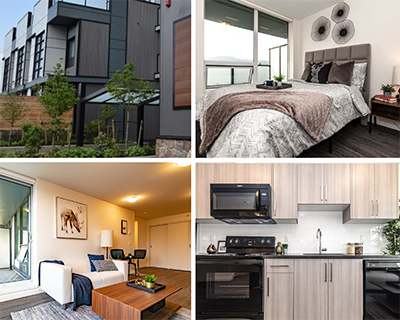RidgeView Q&A

Q: I’ve heard there was a structural problem with this building and that it has since been repaired.
A: Yes, that is correct.
Q: How long was the building vacant and under renovations?
A: Approximately 2 years.
Q: What steps were taken to correct it?
A: After we were alerted to the potential issues, we have upgraded various structural systems as determined and assessed by our structural engineer and architect consultants, and in consultation with the relevant municipal authorities. These upgrades have been designed to ensure the property will be able to withstand seismic activity in accordance with current best practices and standards in seismology and structural engineering.
Q: What sort of proof or verification can you provide me with to make me feel assured that this building is safe to live in?
A: A team of engineers and architects are involved in the project to confirm that the structural flaws are rectified and will be conducting a final inspection and approval before occupancy can occur.
Q: What company repaired the building? Was it the original builder?
A: The structural repairs were completed by companies not involved with the original construction.
Q: I’ve heard that this building was supposed to be torn down. Why wasn’t it torn down and a new one built?
A: Tearing down the property was never discussed and was not necessary. Following a detailed assessment, it was determined that the structural flaws could be repaired and brought up to current seismic standards without demolishing the property.
Q: How is it possible that a building like this was built with a serious structural flaw in the first place?
A: We are unable to comment as Centurion had no involvement with the original design or construction of the property.
Q: I’ve heard that concrete and rebar provide a more solid building material over stick and frame construction. I've also heard that concrete can crumble under certain conditions. Which one is true?
A: Both are untrue. Both methods are good construction materials if they are built to withstand seismic activity and are approved methods of construction in BC and Canada. Majority of high rises in Canada are concrete and rebar.
Q: If at some point after moving in, I am still not comfortable living here, can I break my lease with no penalty?
A: The Landlord and Tenants are responsible for ending the 12-month tenancy lawfully, and a fixed-term tenancy agreement cannot be ended early except in special circumstances according to the Residential Tenancy Act.
Q: I lived in the original building. Can I move back into my same suite, at the same rent?
A: All suites in the building will reflect updated rates according to the current market conditions in the region. Although the Property Manager will give special consideration to the original Tenants by providing a loyalty incentive, the applications will be reviewed on a first come first serve basis and the Landlord cannot guarantee original suites will be available.
Q: Will I be able to get renter’s insurance to live here?
A: The residents will be able to obtain regular renter’s insurance like any other properties.
Q: How can I be assured that the same architects that permitted this building to be built with a structural flaw aren’t still in place?
A: The upgrades and repairs were designed and supervised by a team that included new engineers and architects to confirm that the structural flaws are rectified.


